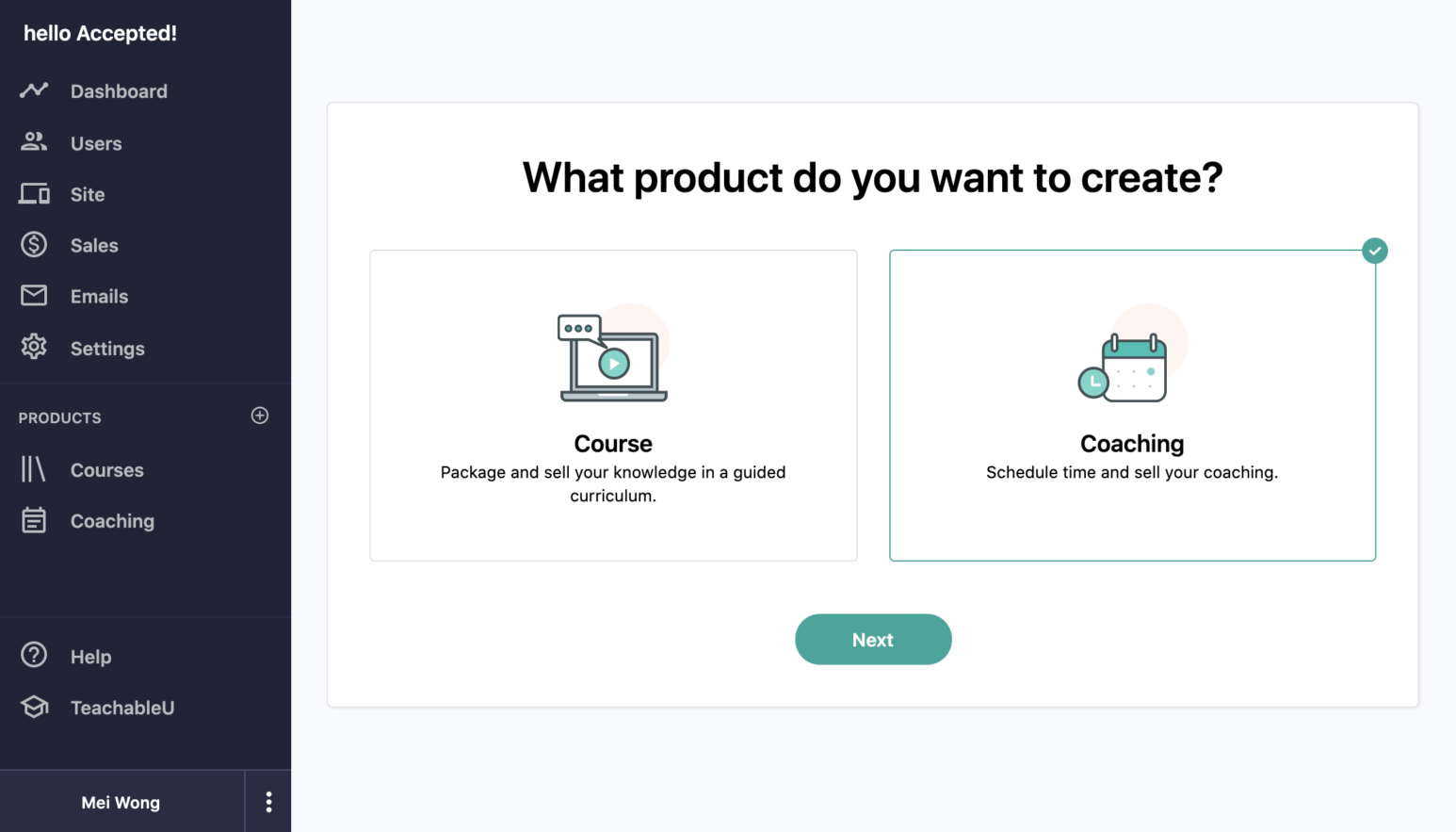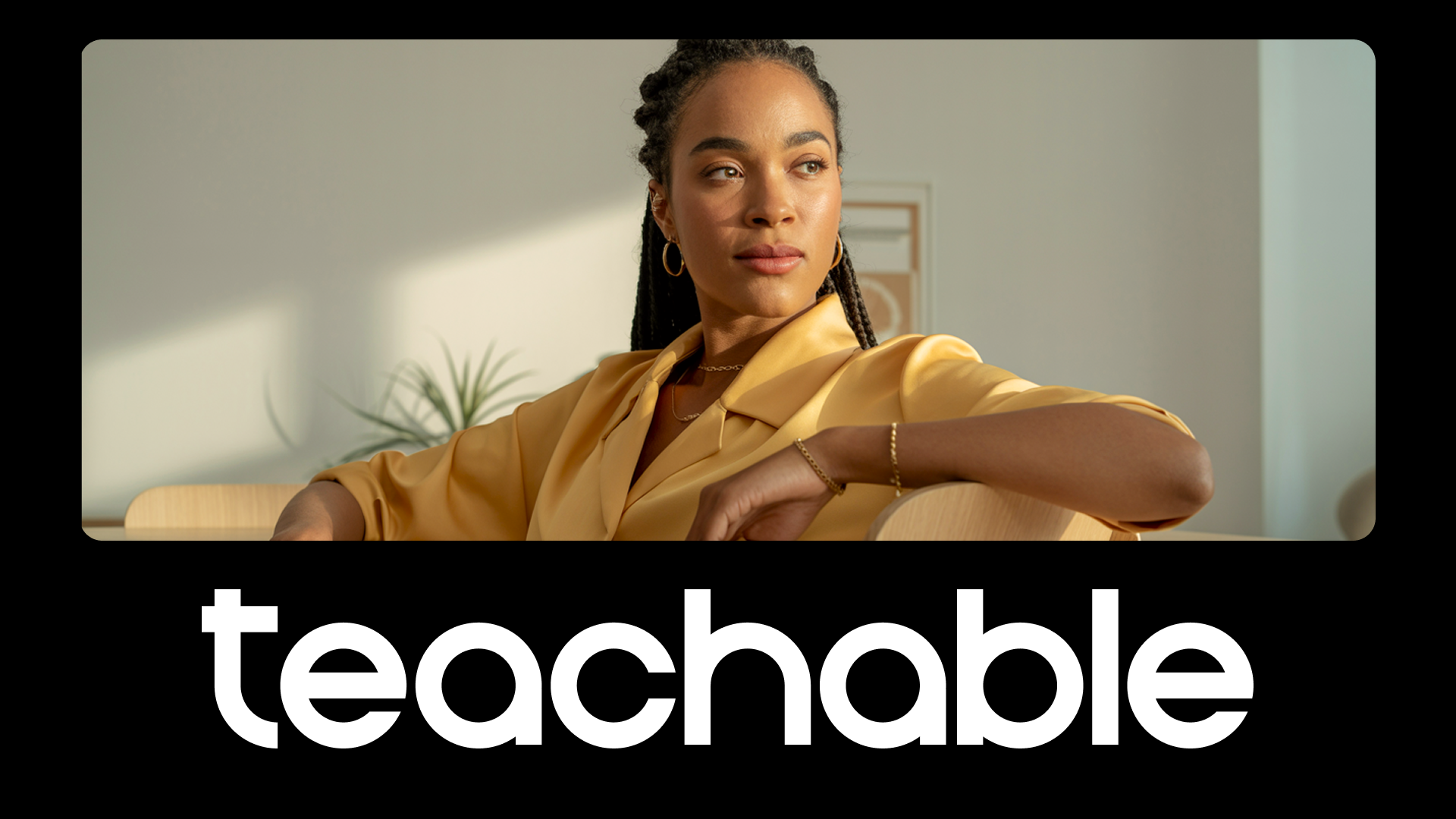We hear it all the time with creators: How will I know if anyone will buy my course? Although there’s never a quick answer to this question, there are a few things creators can do when learning how to validate an online course. One of the best ways to scope out digital validation is to offer coaching services on a related topic to your course.
Many Teachable creators may be tempted to think coaching is simply an add-on feature or upsell to deliver students more personalized experiences or transformations. And although this is true, coaching is actually a very valuable tool to test the waters with a course idea prior to even launching and scaling.
Luckily, Teachable offers the ability to create coaching and courses pages so you can offer both services depending on the audience you have, the audience you want, and your preferred teaching method.

So, how exactly can offering coaching help with a course launch strategy? Prior to launching any course, you simply must validate your idea, which at its core, simply means you’ve taken the necessary steps to feel confident that you have a market. Most importantly, you have a market who will pay. Learning how to validate an online course idea can be done in many ways, but the main points to keep in mind when validating are to search, listen, ask, and test.
Come on in, the water’s fine
Securing a ripe and eager audience is always a necessity for a successful course launch strategy. So, if you’re able to already zone in on an audience who is interested by your services and knowledge, you’re on a good path to building that future student base for your course.
Building your coaching client base is similar to building a course student base. Consider:
- Seeking out students through groups or forums on the topic you’re teaching
- Launching social promotions that drive to your coaching page
- Guest blogging or cross-promoting with other thought leaders in the space
- Email blasting your email list
And of course never underestimate the power of offering freebies or promotions—such as a first introductory call for free to capture leads.
Use the tools you already have
Because we believe in the art of simplicity, Teachable’s coaching scheduler can even integrate with some of the programs you already use so setting up your coaching calls is streamlined.
Although it’s true you’re searching for clients to sign onto your coaching program, you’re also getting a good sense of the market for a potential course. Always be cognizant of who is responding to your services and why.
{{todolist-component="/blog-shortcodes/blog-popup"}}
Some of the coaching students you land may end up enjoying their transformation with you so much they may be inclined to purchase your course or an advanced version of your course. What’s more, because they’ve already proved to be willing purchasers, they may even benefit from an upsell of more coaching sessions or advanced group sessions later on.
The bottom line is that if you’re able to assess the desire for your services on a one-on-one or group coaching basis, you’re one step closer to understanding the needs of your potential course students.
Sell critically, think reflectively
It’s all in the details—or in this case, the feedback. A coaching program allows you much more freedom to begin an open dialogue with your clients. Because you’ve both committed to the sessions and agreed upon a desired outcome from your program, both parties are invested—your students to see results and you to learn, improve, and receive feedback for potential testimonials.
Asking and listening are two essential aspects of validating an online courses business, and this is your time to do just that. Effective coaches ask thoughtful, open-ended questions, practice active listening, and are incredibly purposeful and reflective with their responses.
In fact, being reflective with your coaching sessions in general will not only help you assess your students’ pain points, but it will also help you analyze what is working well. Taking the time to reflect upon your own style and manner of coaching (plus your students’ responses to that) will help you:
- Know how to structure your course
- Understand what material to include in your course
- Figure out what material to exclude from your course
- Confirm what students actually need in order to succeed and feel fulfilled with their purchase
When in doubt, test it out
But of course, not everything will go swimmingly the first time you try it. And that’s OK. In fact, it’s expected. You’re human and you have a unique and special way of delivering your information. And that’s why your clients turn to you. So, yes, with that humanity comes challenges and pivots. It’s OK to continually be testing the run of show.
{{coursecurriculum-component="/blog-shortcodes/blog-popup"}}
Checking the pulse of your clients during their coaching sessions will give you massive insight into the material itself, allowing you to pivot accordingly. We spoke about being reflective with your work but almost equally important is to be responsive. Engaging in real life, human conversations allows you to build empathy and trust with your clients. It also shows that you are willing to adapt and adjust to help them succeed, which is actually one of the most valuable business assets at your disposal.
Adapt and create
You may learn that your course may benefit from multiple iterations—beginners and advanced—or that it should be partnered with a coaching upsell. You may realize the need for your knowledge is so great that this course topic can be broken down into a whole Teachable school. And you may even learn your idea for your course may need some rethinking. Period. And that’s OK too. Realizing you need to head back to the whiteboard is still valuable.
At the end of the day courses and coaching can work in tandem and be highly effective. Whether you choose to toe the waters with a coaching program prior to leading your audience to purchase your course or vice versa, it’s important to be thoughtful with your strategy and always be learning from your students, just as they’re learning from you.
Join more than 150,000 creators who use Teachable to make a real impact and earn a real income.


.png)



.png)

